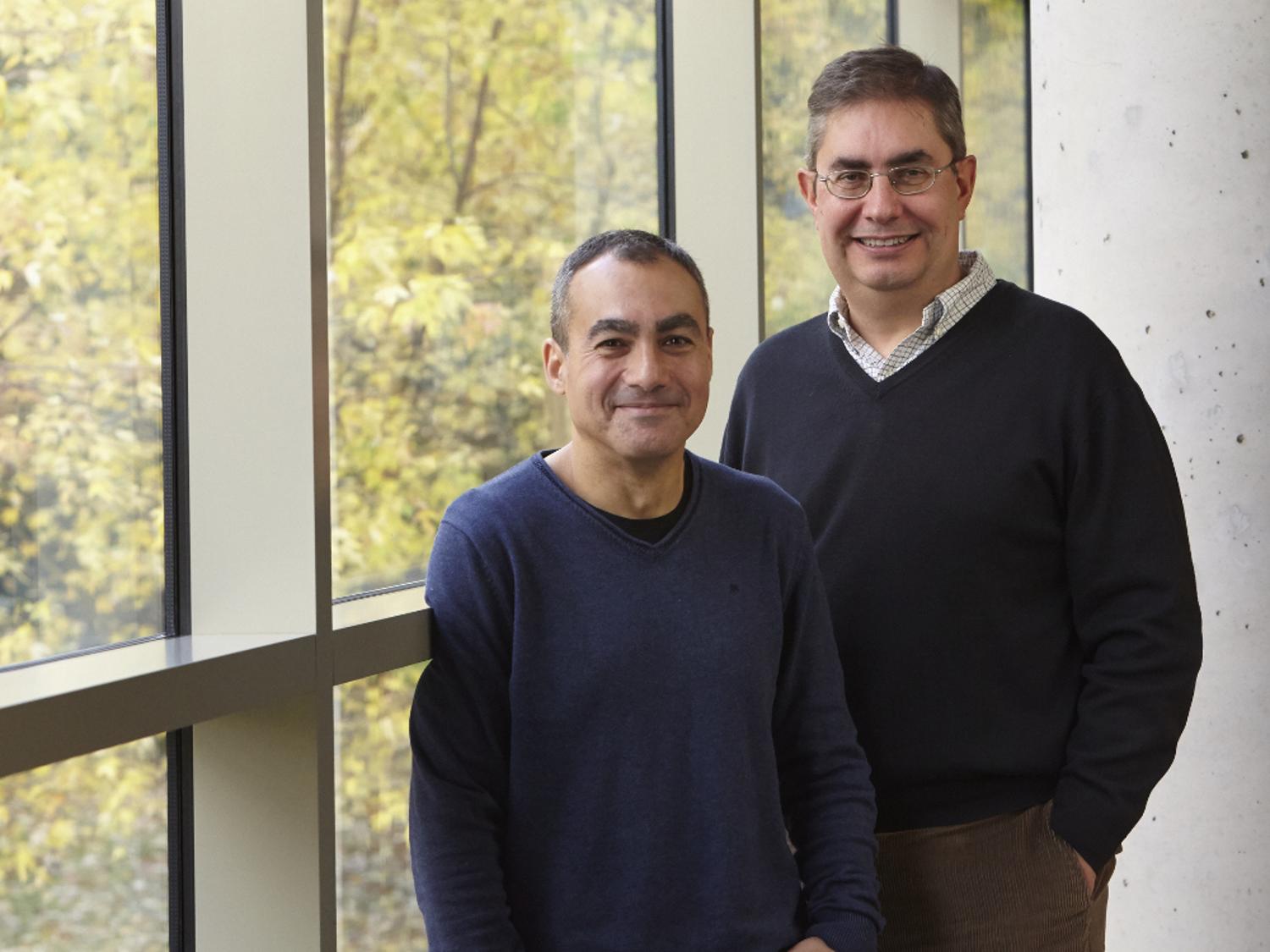DIPC, CFM and nanoGUNE researchers are the co-authors of one of the twelve most important papers in the history of the Journal of Physics
Daniel Sánchez-Portal, of the Centre for Materials Physics (CSIC-UPV/EHU), and Emilio Artacho, Cambridge University professor and Ikerbasque researcher at CICnanoGUNE, both members of the Donostia International Physics Center (DIPC), are co-authors of one of the twelve most important papers in the 50-year history of the Journal of Physics series, according to the publication’s editors. The work selected was published in 2002 and presented a new, efficient atomic simulation code known by its acronym SIESTA; its use is very widespread today.

To mark the 50th anniversary of the Journal of Physics series, which encompasses various important journals in the field of physics, its editors have drawn up a list of the twelve most important papers published on its pages. Daniel Sánchez-Portal, researcher at the Centre for Materials Physics (CSIC-UPV/EHU), and Emilio Artacho, Cambridge University professor and Ikerbasque researcher at CICnanoGUNE, both members of the Donostia International Physics Center (DIPC), are co-authors of one of the twelve papers selected.
The paper presented a new atomic simulation method and code known by its acronym SIESTA. This successful code, open and free for the research community, implemented a new, very efficient calculation method that allows the properties of materials to be predicted, thus resolving quantum mechanics equations without needing to resort to large, very costly computing facilities. Nowadays, thousands of users across the world use SIESTA in their daily research work, and the original article published in the Journal of Physics: Condensed Matter in 2002 (DOI: 10.1088/0953-8984/14/11/302) and signed by another five authors in addition to Sanchez Portal and Artacho, has received over 7,000 citations, according to Google Scholar, the search engine specialising in scientific literature. Compelling reasons that have prompted the editors of the Journal of Physics to include it in their select list.
In the words of the co-authors Sánchez-Portal and Artacho, "we are in excellent company indeed in the list of selected papers". In fact, among the other 11 papers are some signed by Nobel Laureates, such as J. Michael Kosterlitz and David J. Thouless (Nobel Prize in Physics 2016); Phil Anderson (Nobel Prize in Physics 1977), or seminal works by world-famous researchers, such as Sir John Pendry (Dirac Award 1996), E. Rashba (discoverer of the Rashba spin effect) and S. Doniach (one of the fathers of the synchrotron x-ray sources of radiation).
- J. M. Soler, E. Artacho, J. D. Gale, A. García, J. Junquera, P. Ordejón, and D. Sánchez-Portal
Journal of Physics: Condensed Matter (2002) DOI: 10.1088/0953-8984/14/11/302
The SIESTA method for ab initio order- N materials simulation
